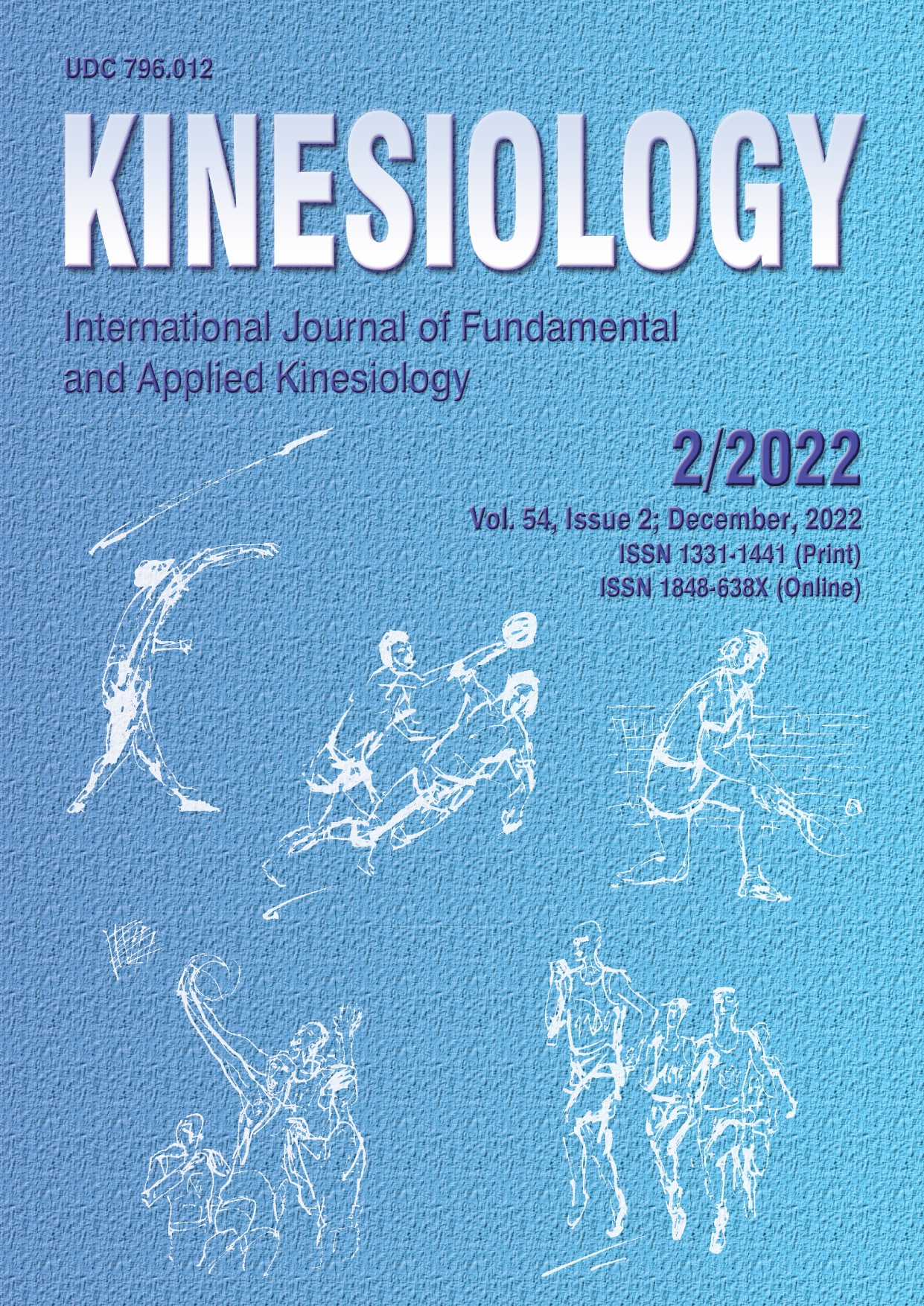NEUROMUSCULAR AND FUNCTIONAL RESPONSES TO CONCENTRIC AND ECCENTRIC STRENGTH TRAINING IN OLDER ADULTS: A SYSTEMATIC REVIEW
Abstract
The type of muscle action is important when designing exercise interventions for older individuals and may result in different effects. In this study we performed a systematic review of controlled trials comparing the effects of concentric and eccentric resistance training, performed on isokinetic dynamometers, on lower extremity muscular and functional performance in older adults (CDR42017075316). Six databases (Pubmed, CINAHL, SPORTDiscus, PEDro, Cochrane Central, and Embase) were searched. Outcomes of interest concerned neuromuscular and functional performance. Trials should consider 65 years or older individuals participating in concentric and/or eccentric training on isokinetic dynamometers, at least twice a week, during at least four weeks. Results should be compared to a control group or between different contraction types. A qualitative analysis of data was done. Quality assessment considered the Cochrane Risk of Bias Tool. The initial search returned 10376 studies and four trials were considered for inclusion. Three trials compared the effects of concentric training with the ones of control groups, and one compared the effects of concentric with the ones of eccentric training. All trials focused on knee extensor and flexor muscles, and one also focused on ankle dorsiflexors and plantarflexors. Training programs included three sessions/week lasting 8-12 weeks. Concentric training improved strength, power, and muscle antagonist coactivation compared to the control. Concentric and eccentric training improved knee isometric, concentric and eccentric strength and scores on self-paced step test, with no effect on gait speed. They did not consider muscle structural parameters. The findings of beneficial effects of isokinetic concentric and eccentric resistance training on muscle strength and power in older adults were consistent. However, there is a lack of trials addressing the effects of isokinetic strength training on muscle structure and functionality.
Key words: aged, aging, resistance training, lower extremity, physical examination
Downloads
Published
How to Cite
Issue
Section
License

This work is licensed under a Creative Commons Attribution-NonCommercial 4.0 International License.
At Faculty of Kinesiology we recognize that access to quality research is vital to the scientific community and beyond. Kinesiology is non-profit journal and all costs of publishing and peer review process are covered by the publisher itself or other funding sources like Ministry of Science and Education of the Republic of Croatia. Full text papers are also available free of charge at http://hrcak.srce.hr/kineziologija. There are no restrictions on self archiving of any form of paper (preprint, postprint and publisher's version).
Articles are distributed under the terms of the CC BY - NC 4.0
Kinesiology does not charge any fees to authors to submit or publish articles in our journal.


